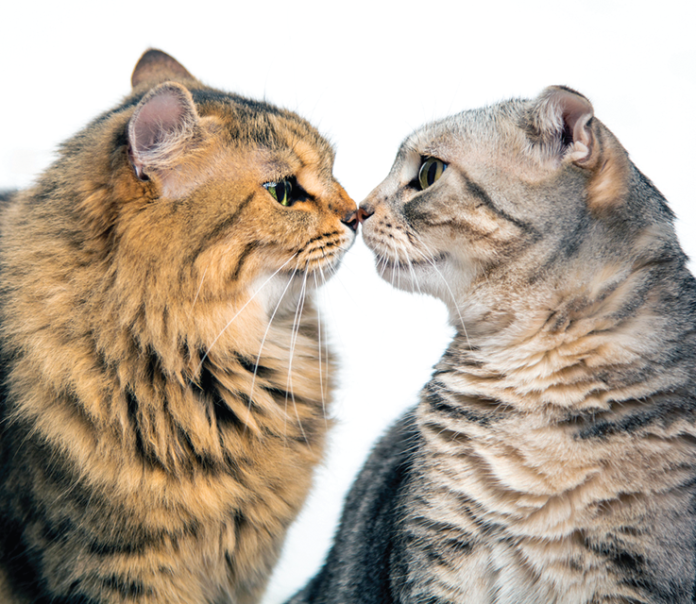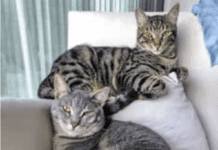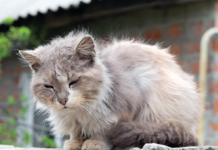Q. Recently, I trapped a feral cat who had appeared at my front door. He tested positive for FIV, so releasing him was no longer an option. Since he is a relatively young cat, I decided to keep him indoors even though I currently have two other healthy adult cats.
Do you feel that this FIV positive feral cat can ever be integrated into my feline family?
A. Thanks for getting in touch and for your obvious concern for and care of these fortunate kitties. The question of how to manage cats that are FIV-positive is a common one, and recent studies have provided us with useful information in this regard.
Feline immunodeficiency virus (FIV) is a retrovirus that is closely related to human immunodeficiency virus (HIV), although there is no evidence that humans can be infected with FIV nor that cats can be infected with HIV. Our best estimate is that between 1 and 14% of cats are infected (depending upon locale), and while infected cats may be more susceptible to other infectious agents because of the immunodeficiency that can be caused by FIV, recent studies suggest that cats infected with FIV can live high-quality lives for years, often for as long as cats that are not FIV-infected.
It is important, though, to be proactive about the care of FIV-infected cats. Promptly consult your veterinarian if you suspect any health problems and have your veterinarian examine this FIV-positive cat twice yearly. It is important that you ensure that your other cats are healthy before bringing in this new cat, and determining whether they are FIV-infected prior to bringing in this new kitty (if you have not already done this) is probably a good idea.
It is, of course, important to prevent infection of other cats with FIV. We know that transmission of FIV occurs primarily through bite wounds that can occur during fights, so the most important thing is to make sure that there is no conflict between this new kitty and the cats that you are currently living with during their introduction.
I’d suggest that you make the introduction slowly, by first isolating the new cat in a room with his own food and water bowls and litter box. For the first few days, it can be helpful to intermittently take something with his scent on it (a blanket, for example) and let your current kitties investigate/smell this, and vice versa.
After this, I’d recommend introducing them through a screen or baby gate in the doorway of the isolation room so that they can see and smell each other but cannot physically interact. It can be helpful to feed them in close proximity through this gate/screen and to reward them with verbal praise if they behave well (i.e., no signs of aggression).
Once they feel comfortable interacting through the screen/gate for a couple of days, you can try introducing them without the gate in a neutral place (i.e., not in the room that the new boy is being housed in). It would be ideal to have the new cat on a harness/leash so that you can intervene easily if you see signs of aggression. If you do see any aggression, I recommend reverting to the last interacting situation that did not result in aggressive behavior and then slowly moving forward with the plan.
The goal is to gradually have them become comfortable with each other while eliminating barriers to their physical interaction (i.e. gate, screen, carrier, harness/leash) until they are able to interact without aggression and without your intervention in the same space, ultimately moving away from having the new cat isolated. You can learn more about this process by visiting the Cornell Feline Health Center’s website at: tinyurl.com/CornellFHC-Aggression.
Working closely with your veterinarian in this process is important, and in some cases, consultation with a veterinary behaviorist can be helpful.
Best of luck, and please send us an update when you can.




